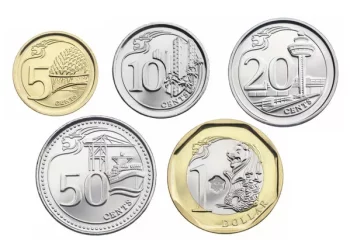In gold investment, lock orders are divided into two types: lock loss order and lock gain order.
In fact, Xiaobian is not recommended to operate, strictly set up a stop loss or timely profit-taking.
Small losses are highly likely to become large losses if improper operation.
The following Xiaobian for you to talk about lock loss and lock surplus.
1, lock loss 1, why lock loss.
This step is not necessary if you can cut your losses strictly.
Generally in the following situations will lock single: one situation is the market after the order becomes unclear, can not judge the direction of the lock single can be selected;
Another situation is that you do not set a stop loss, and your account losses have been very large when you can not bear to close the position, in order to prevent greater losses or burst the position can also choose the lock loss operation.
An IMPORTANT MOVE THAT IS OFTEN FORGOTTEN AFTER A LOCKUP IS THAT IT IS BEST TO ADD A STOP LOSS TO AN ORDER IN THE OPPOSITE DIRECTION OF THE ANALYSIS, which can be slightly higher by 2-3 points to prevent it from being swept back AND forth before the actual market moves out.
2, how to solve the single.
Solution SHEET, IT IS YOU WANT TO CHOOSE APPROPRIATE TIME AFTER LOCKING SHEET TO SOLVE THIS LOCK, NAMELY TWO SHEETS RESPECTIVELY FLAT, IF FOREVER UNEVEN WAREHOUSE, ALTHOUGH WHAT SHOWS ON THE ACCOUNT IS LOSS UNCHANGED, BUT THE OPERATION BEHIND YOU BESIDES THE INTEREST THAT SHOULD BEAR OVERNIGHT SHEET ALSO CAN BE AFFECTED.
Spot gold lock single how to solve there are two difficulties: namely, the solution of the single point and time.
At WHAT point and when will the settlement directly affect the profit and loss of your account?
In simple terms: the best point is to find a break, time must find market direction when clear.
For the average investor, it may be very difficult to grasp the point and time. The following two methods are relatively simple, feasible and easy to master after practice.
Method 1: first solve the reverse potential list;
Method two: First solve the profit sheet.
The purpose of the lock is to prevent losses, so when the market is clear, the reverse single solution is equal to cut off the source of losses.
But note that a reverse order is not the same as a loss order.
Another list can choose the market to go almost flat again.
In the second approach, the choice is to take profits first, and the other order can wait for a pullback or reversal to flatten.
But the callback and reversal involves the question of timing.
If another order if not in time to smooth out is likely to move to the long – term.
Ii. Lock surplus Strictly speaking, there is little difference between lock surplus and lock loss. The only difference is that when the account holds a lock order, one is a loss and the other is a profit.
The suggestion is to lock in profit as timely profit-taking or follow up the move stop loss, because more than the next single market after a clear order.
Because the lock lock is profit, so it is relatively easy to solve, the psychological burden is much smaller.
Having said that, the principle of order solution is similar to that of loss order solution.
Because they want similar results, one is to reduce the loss, the other is to maximize the gain.
There is a saying in investing: reduce your loss is equal to gain.
The data fueled fears of a U.S. recession and sent U.S. stocks to their worst first half in more than half a century.



























